iPhone Not Receiving Calls? Explained & Resolved
Your iPhone will not receive calls if the phone’s network settings are no longer valid and do not comply with your carrier’s requirements. Try resetting the iPhone’s network settings to their defaults, which will reinitialize the phone’s network modules.
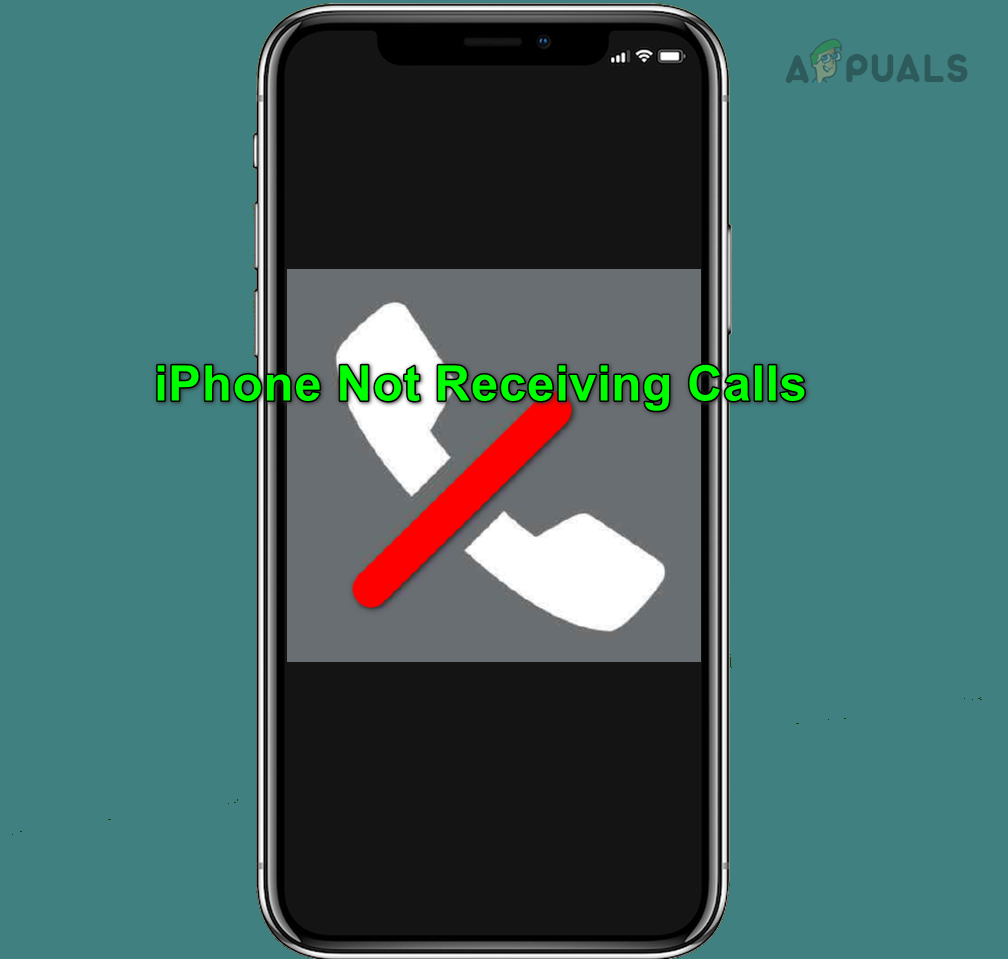
Before diving into the troubleshooting process, verify that the call problem is not due to a network failure affecting your carrier (either nationally or in your region). Also, try removing the phone’s protective case, as some cases, particularly those with magnetic attachments, can obstruct signals from the carrier and result in the call issue.
1. Enable and Disable the Airplane mode
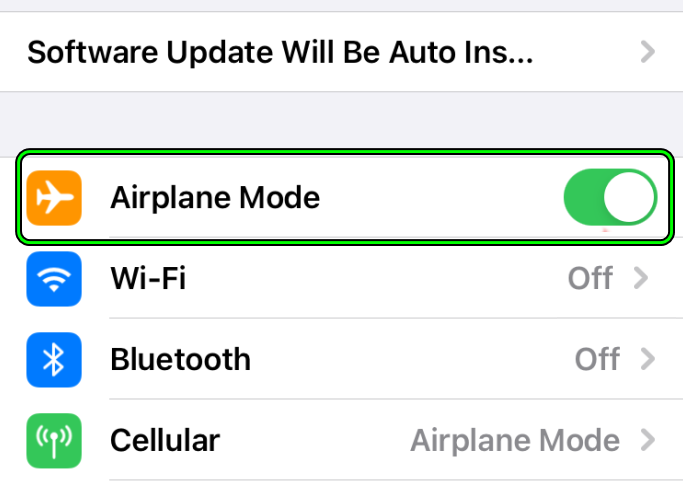
Enabling and disabling the iPhone’s airplane mode will be force your device to reconnect to the Signal tower fixing any network inconsistency that might be causing this issue.
- Launch the iPhone Settings and enable Airplane Mode.
- Wait for 5 minutes (the cache reset time for many carrier towers).
- Disable Airplane Mode and check if the iPhone is receiving calls.
If the issue persists, re-confirm your iPhone is compatible with the carrier network. You can check on the carrier’s website.
2. Re-insert the SIM Card into the iPhone

Reinserting the SIM, power-cycles the SIM card. This can fix any network-related glitches and bugs you might be facing with your iPhone.
- Remove the SIM card from the iPhone and wait for 5 minutes. During this time, it will be better to clean the SIM and the iPhone’s SIM port.
- Insert back the SIM and check if the iPhone has started to receive calls.
- If that fails and to rule out any carrier side issues, check if your SIM works fine in another phone or if another SIM works in the iPhone.
3. Force Restart the iPhone
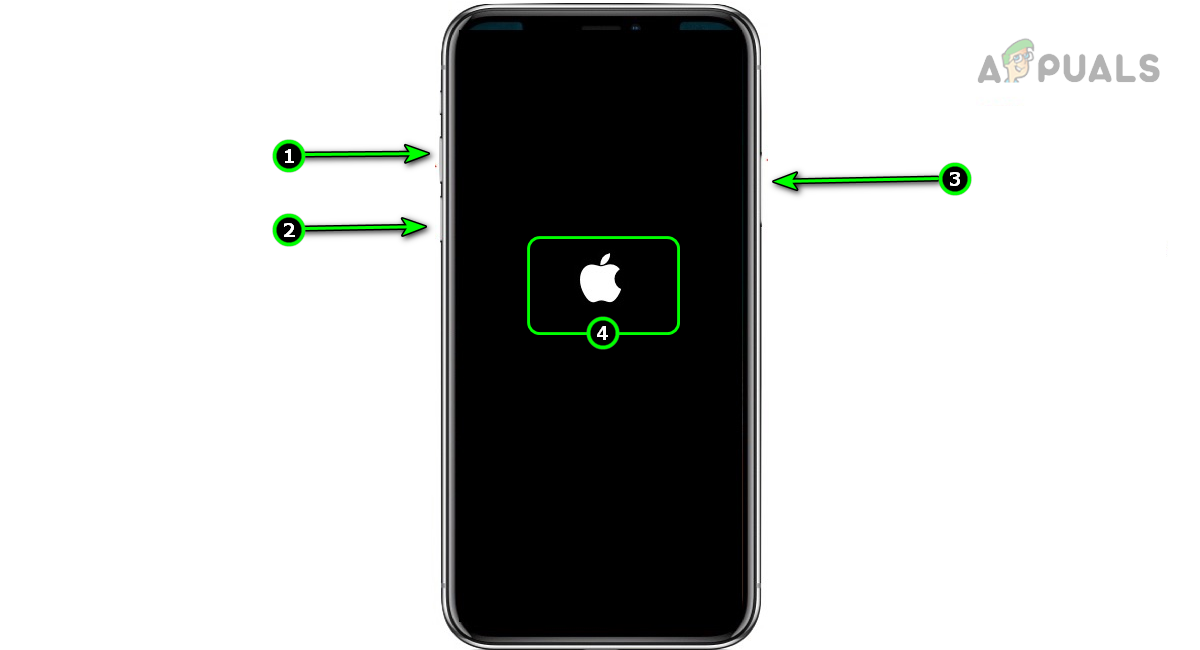
Try a force restart of the iPhone as it will refresh the modules and completely restart your device.
- Press and quickly release the following buttons in order.
Volume Up Volume Down
- Now, press and hold the side button of the iPhone.
Do not release the side button on the power menu until you see the Apple Logo. - Once the Apple logo is shown on the screen, release the button.
- Wait till the phone is properly powered on and check if its calling functionality is back to normal.
4. Update the Carrier Settings to the Latest Release
You will not be able to receive calls if the phone’s carrier settings are outdated and the carrier towers cannot communicate with the phone. To fix this, update your iPhone’s carrier setting to the latest version.
- Navigate to Settings > General > About.
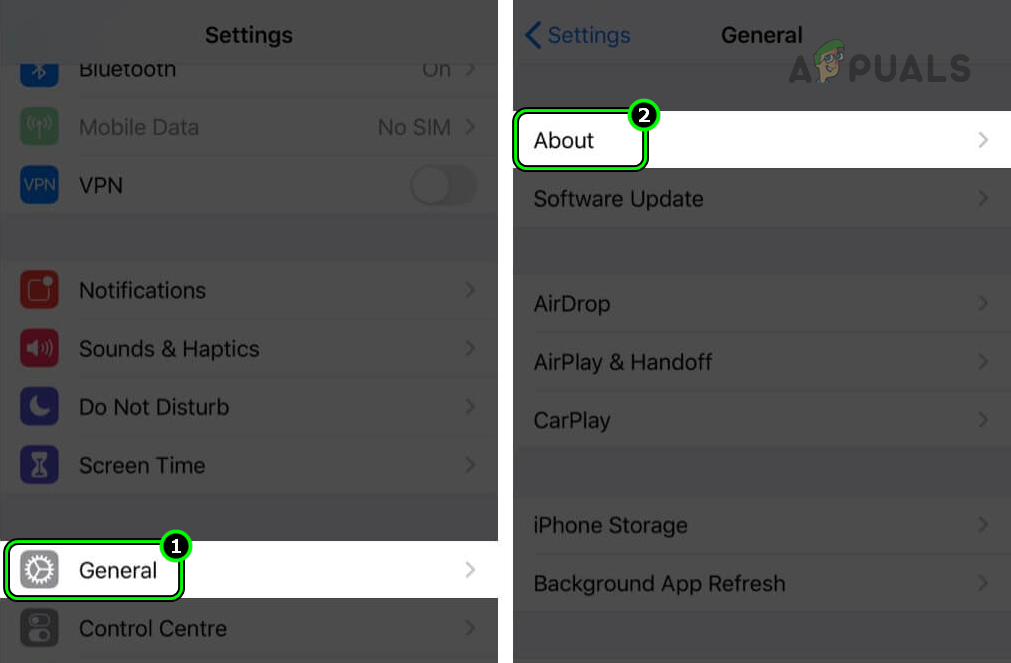
Open About in the General Settings of the iPhone - If a carrier settings update prompt is displayed, tap on Update.
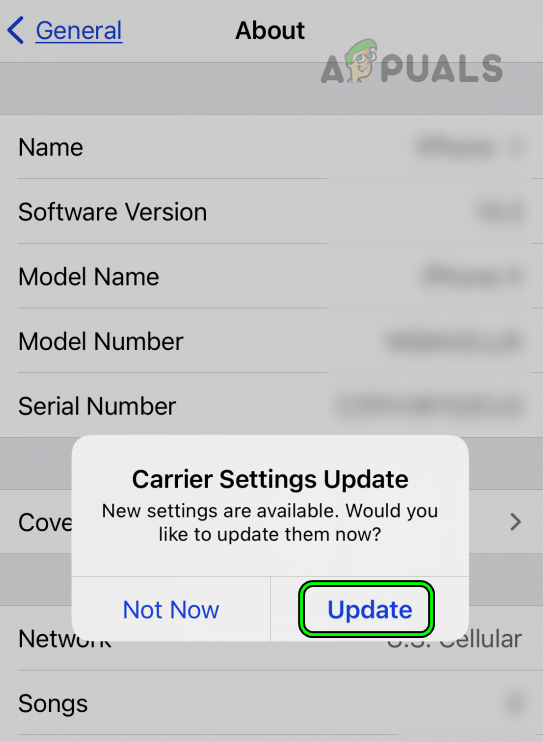
Update Carrier Settings of the iPhone - Once updated, restart the iPhone and check if the phone has started to receive the calls.
5. Update the OS of the iPhone to the Latest Version
An iPhone with an outdated OS will not be able to receive calls either because of an incompatibility with the carrier network or as a result of an iOS bug. In both cases, updating the phone’s OS to the latest build will resolve the calling issue.
- Navigate to Settings > General > Software Update.

Open Software Update in the iPhone Settings - If an update is available, tap on Download and Install.
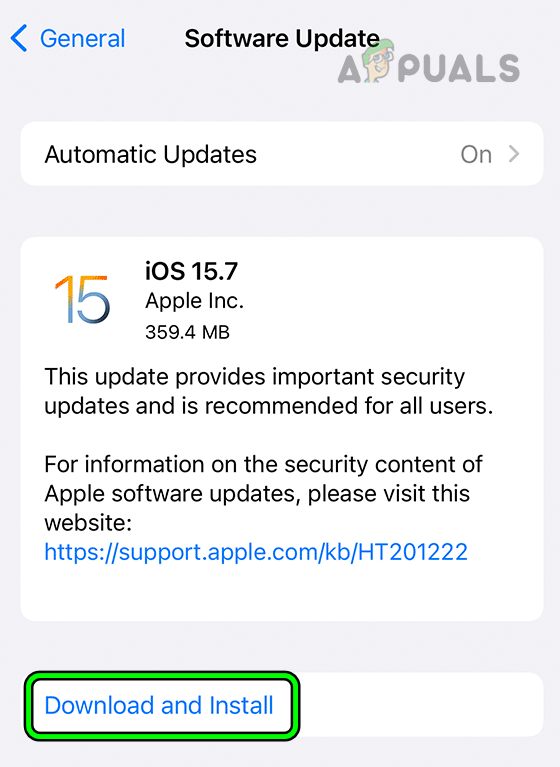
Download and Install the Latest iOS on Your iPhone - Wait till the process finishes and once done, restart your iPhone. See if your phone is receiving calls.
6. Enable Caller ID in the iPhone’s Settings
The Caller ID feature is used to show your Caller ID when making calls to different mobile phones. Even though this doesn’t have a direct relationship with the calling functionality, we’ve seen cases where enabling this option fixed the problem.
- Navigate to Settings > Phone > Show MY Caller ID.
- Enable Show My Caller ID.

Enable Show My Caller ID on the iPhone - Restart the iPhone and check if the calls are being received on the phone.
- If that fails, check if dialing *#31# in the iPhone’s dialer resolves the issue. This will disable Hide Caller ID on the carrier side, if supported by your carrier.
7. Disable and Enable iMessages
Certain in your iPhone’s messaging system can result in network interruptions, consequently preventing incoming calls. This typically arises when the messaging components encounter an error, disrupting the normal flow of network operations.
A useful remedy for this issue is to disable and then re-enable the Messages app on your iPhone. This action essentially refreshes the messaging system, clearing any existing issues and hence restoring the ability to receive calls.
- Go to Settings > Messages.
- Disable iMessage and restart the iPhone.
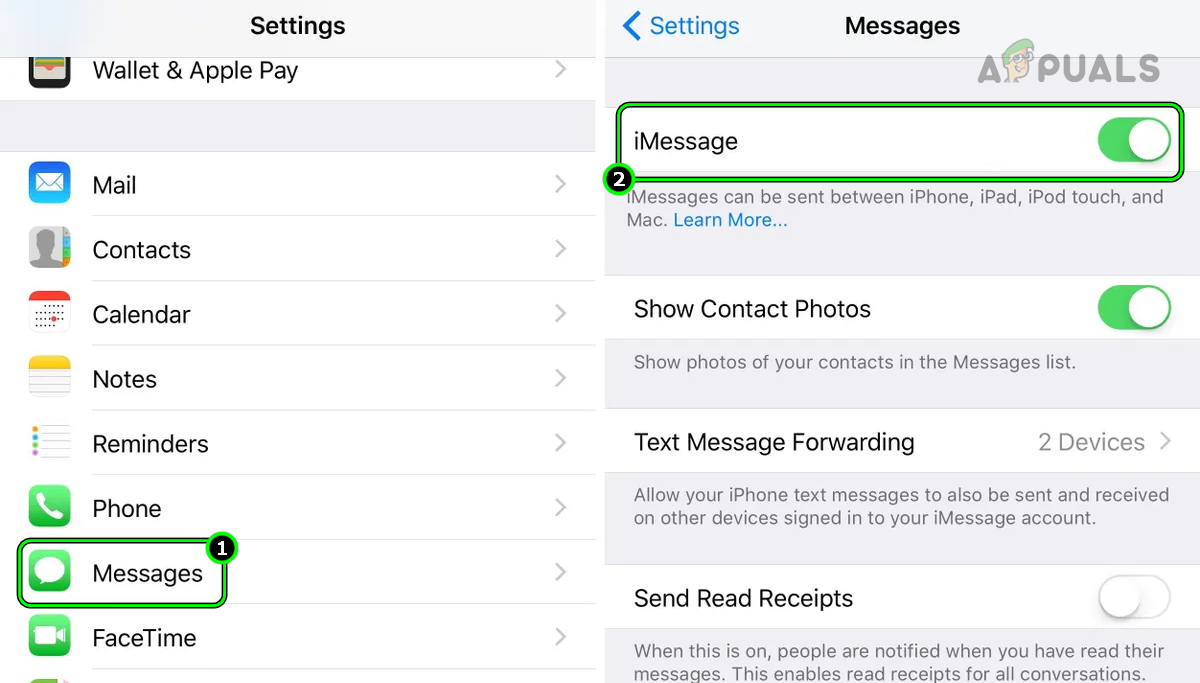
Disable iMessage on the iPhone - Enable Messages and check if the iPhone has started to receive calls.
8. Disable and Enable the iPhone’s Call Waiting Feature
You will not receive calls on your iPhone if there is a malfunction of the phone’s call-waiting feature. As a result of this, the network “thinks” that the phone is on a call (when it is not), so the call is not routed to the phone. Here, disabling and enabling the phone’s call-waiting feature will clear the issue.
- Navigate to Settings > Phone > Call Waiting.
- Disable the Call Waiting and restart your iPhone.
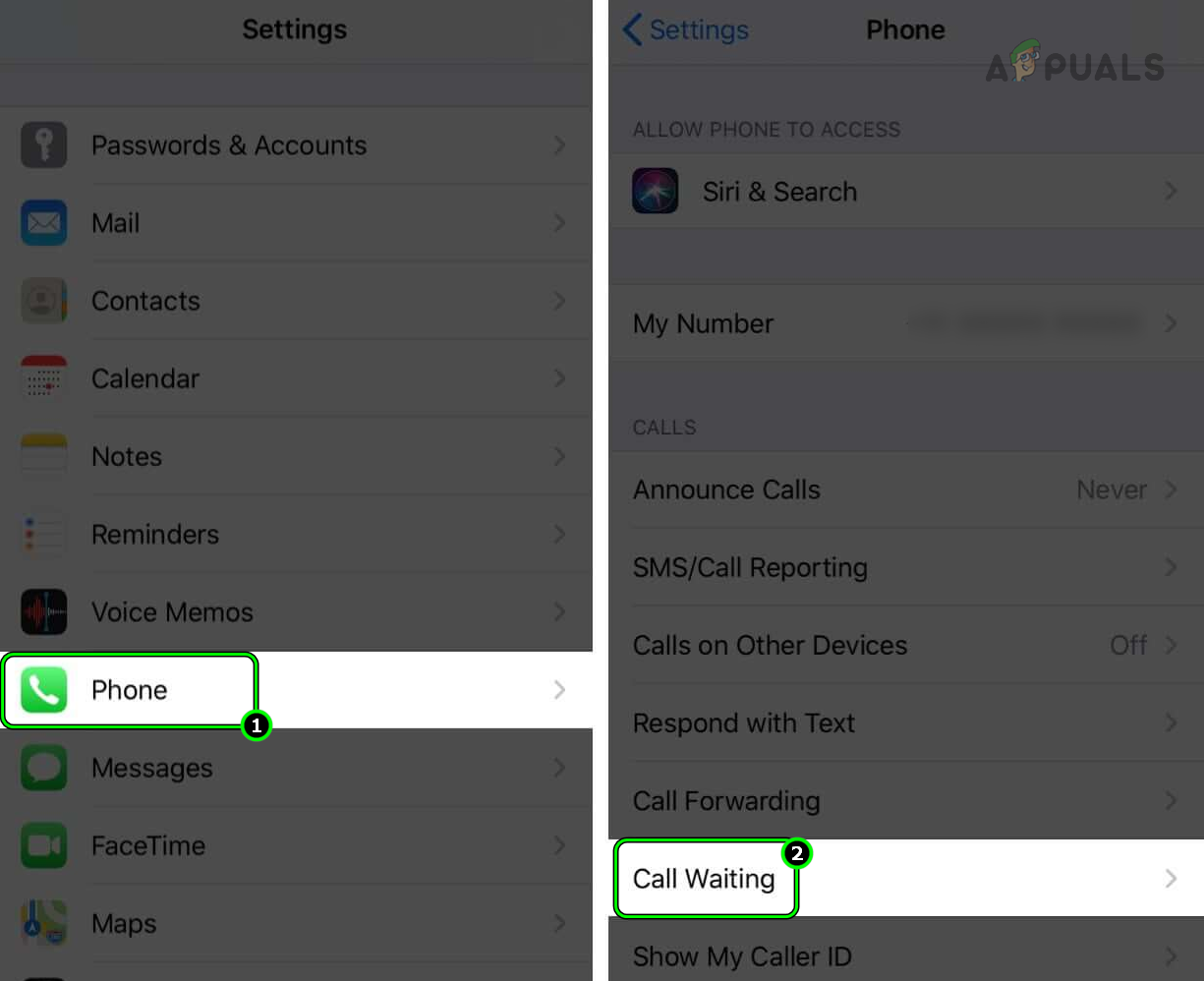
Open Call Waiting in the iPhone’s Settings - Enable the Call-Waiting feature and check if the phone is receiving calls.

Disable Call Waiting on the iPhone
9. Manually Select the Network on the iPhone
In some instances, your iPhone’s automatic network selection can become unreliable, causing frequent disconnections, particularly when a call is being directed to your phone. This leads to missed calls as the network doesn’t stay connected long enough to receive them.
A potential solution to this problem is to switch from automatic to manual network selection. This change means your iPhone will maintain a more stable connection to your chosen cell tower, especially in areas with stronger signal strength, improving your call reception.
- Go to Settings > Cellular > Network Selection.
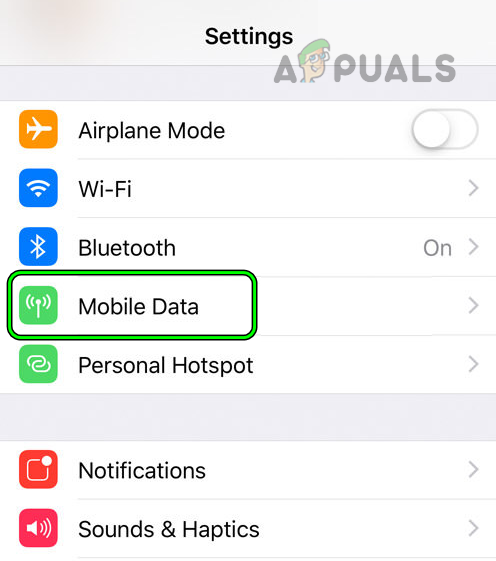
Open Mobile Data in the iPhone Settings - Disable Automatic and in the list of networks shown, select your carrier (like Verizon). See if you can receive calls on the iPhone.
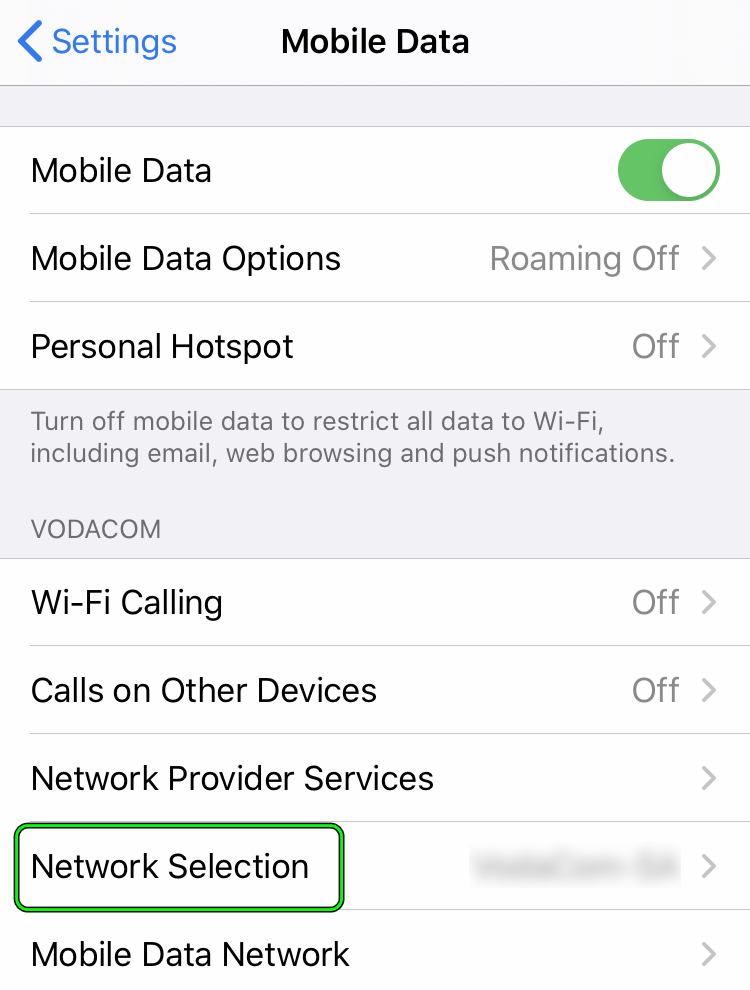
Open Network Selection in the iPhone’s Mobile Data Settings - If not, select another network type of your carrier and check if the phone starts receiving calls. For example, if the issue is occurring on Verizon 5G, select the Verizon 4G network.
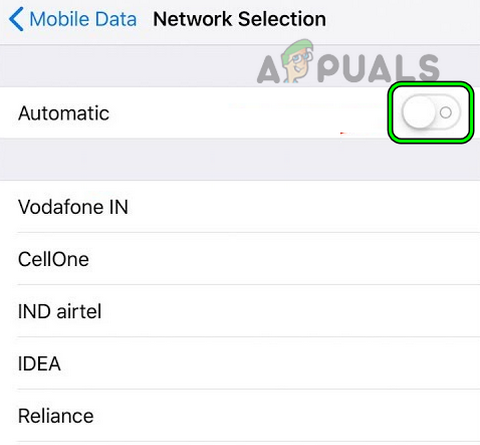
Disable the Automatic Network Selection of the iPhone
If the above method doesn’t solve the problem, you could consider trying a new SIM card. This could be particularly relevant if you’ve recently upgraded to a new iPhone but are still using an older SIM card.
For example, if your SIM card was designed for a 2G or 3G network, it might not work properly with a newer iPhone that’s meant for 4G or 5G networks.
10. Disable Carrier’s HD Calling
HD calling is a feature that enhances the audio quality of your calls, but it requires a strong network connection to function properly. If the cell signal in your area is weak, HD calling might struggle to perform well.
Furthermore, the way that HD calling operates on an iPhone might not align perfectly with how your carrier’s system is set up. This discrepancy can also lead to issues with call reception.
To disable HD Calling for Verizon:
- Log into the Verizon website by using a web browser.
- Go to Settings > HD Calling.
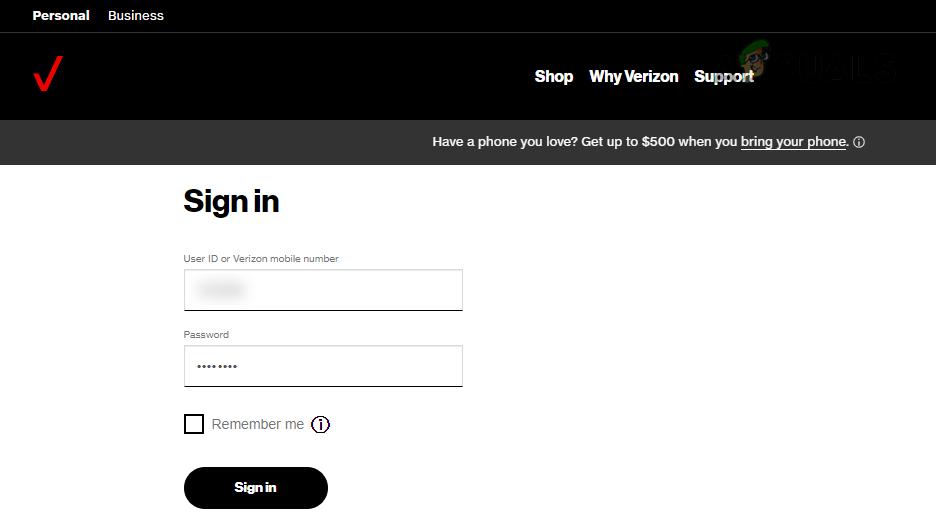
Log into the Verizon Website - Disable HD Calling and log out of the Verizon website.
- Restart the iPhone and verify if the phone is receiving incoming calls.
11. Disable the Call on Other Devices iPhone’s Feature
Apple’s “Call on Other Devices” feature can be quite handy, as it allows you to pick up calls on different devices when your iPhone isn’t close at hand. However, if your iPhone mistakenly believes that you’re answering calls on another device, it might not ring as expected.
If you think this might be the case, you can simply disable the “Call on Other Devices” option on your iPhone to see if that resolves the issue.
- Navigate to Settings > Phone > Calls on Other Devices.
- Disable Calls on Other Devices and restart the phone.
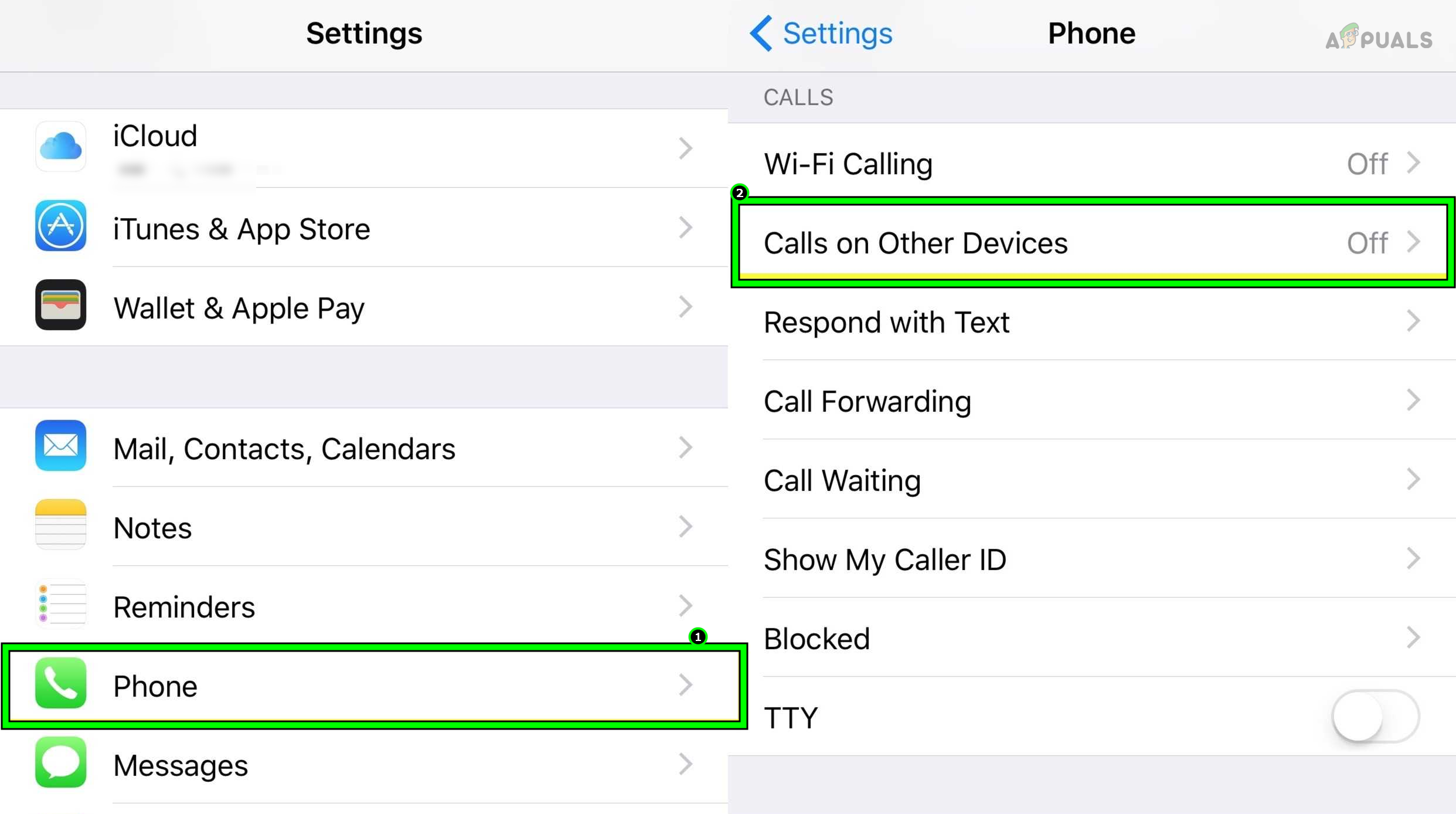
Open Call on Other Devices in the iPhone Settings - Upon restart, determine if incoming calls can be received on the iPhone.

Disable Allow Calls on Other Devices on the iPhone
12. Disable the “Silence Unknown Callers” Feature
The “Silence Unknown Callers” feature on your iPhone is designed to provide a level of convenience by reducing unwanted interruptions from callers not in your contact list. However, due to certain bugs, your iPhone might incorrectly identify a known caller as unknown, causing it to silence their calls.
This could potentially be why you’re missing calls. If this is the case, you can rectify the situation by turning off this option on your iPhone.
- Navigate to Settings > Phone > Silence Unknown Callers.
- Restart the iPhone and check if it is receiving calls normally.
- If not, check if enabling the Announce Calls feature (Settings > Phone > Announce Calls) resolves the issue.
13. Update the Network Provisioning on the iPhone
If your iPhone has lost its provisioning with the carrier, then it will not be able to receive calls. Here, updating the iPhone’s network provisioning will do the trick.
To update network provisioning on Sprint or any other similar network:
- Navigate to Settings > Wi-Fi.
- Disable Wi-Fi and wait for a minute.
- Enable Wi-Fi and connect the iPhone to a Wi-Fi network.
- Dial the following code in the phone’s dialer:
##873283#
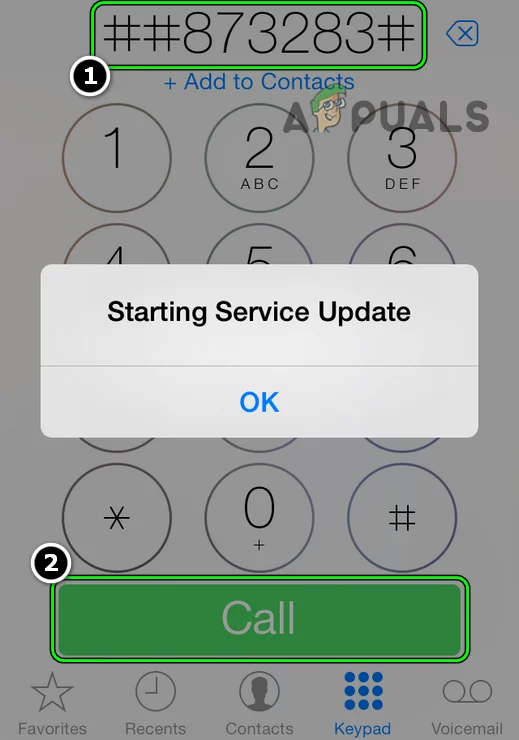
Start Service Update on the iPhone - Follow the prompts on the screen and in the end, restart the iPhone. Check if the iPhone is receiving calls.
- If you encounter an error during the process, disable Cellular or Mobile Data (Settings>> Cellular>>Cellular Data) and wait for a minute.
- Enable Cellular or Mobile Data and check if the phone is receiving incoming calls.
- If that fails, dial the following code (which removes and updates the iPhone’s network provisioning) in the iPhone Dialer:
##25327#
- Restart the iPhone and check if the iPhone is successfully receiving calls.
- If the issue persists and you have a carrier app, reactivate the iPhone or number in the app.
- Restart the iPhone and check if the phone is working properly. If your carrier does not have an app, then it must have an activation string (like *148*1#) and you may use it to check if you need to re-activate your phone/SIM with the carrier.
14. Disable Call Forwarding on the iPhone
The “Call Forwarding” feature on your iPhone allows you to redirect incoming calls to another number. However, if this feature isn’t configured properly, it could result in your calls being sent straight to voicemail or even another number that’s not currently in use, thereby causing you to miss those calls.
Try disabling this feature and see if this does the trick.
- Navigate to Settings > Phone > Call Forwarding.
- Disable Call Forwarding. If a number is entered into the Forward to a Number section, remove it.

Open the iPhone’s Call Forwarding Settings - Save the changes and restart the iPhone. See if the problem is solved.

Disable Call Forwarding on the iPhone - If not, navigate to Settings > Phone > Call Forwarding.
- Enter your cell number in the call forwarding number and hit the back button.
- On the prompt that the call forwarding setting could not be saved, tap on Dismiss.
- Head to Accessibility > TTY Settings.
- Enable TTY Settings and restart the iPhone. Check if the iPhone is receiving calls normally.
15. Remove the Call Protecting App
You will not be able to receive calls on the iPhone if a call-protecting app on your phone is not letting the calls show on your phone. In addition, if you have enabled any call-blocking feature on the carrier side (either manually or through an app), then that might also lead to the problem at hand.
In this scenario, removing the call-protecting app on the iPhone or disabling the call-blocking features on the carrier side will resolve the issue. The process of disabling AT&T Call Protect:
- Log into the Account Management page of AT&T.
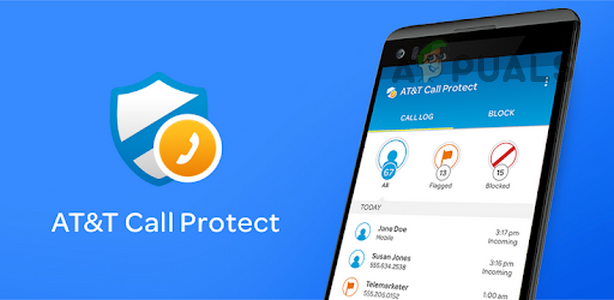
Disable AT&T Call Protect - Navigate to the following path:
Account > Manage Device > Add-Ons > See all add-ons > My add-ons > AT&T Mobile Security > See options > Opt out of AT&T Mobile Security & Call Protect - Confirm to opt out of Call Protect and uninstall the AT&T Call Protect app on your iPhone.
- Restart the iPhone and confirm that the iPhone is able to receive calls.
AT&T ActiveArmor, Verizon Call Filter app, and One Talk Dialer are also reported to cause the iPhone’s call issue at hand.
If that does not work, check if the blocked contacts in your iPhone (Settings > Phone > Blocked) are not causing the problem.
16. Disable the iPhone’s Focus or Edit the Focus Settings
If your iPhone is in Focus mode and set to send calls to voicemail, it will not receive or display incoming calls. This can be solved by turning off Focus mode or editing its settings.
- Navigate to Settings > Focus > Mode (like Do not Disturb).
- Disable the Focus Mode and make sure no scheduled or automatic enabling of focus is enabled.
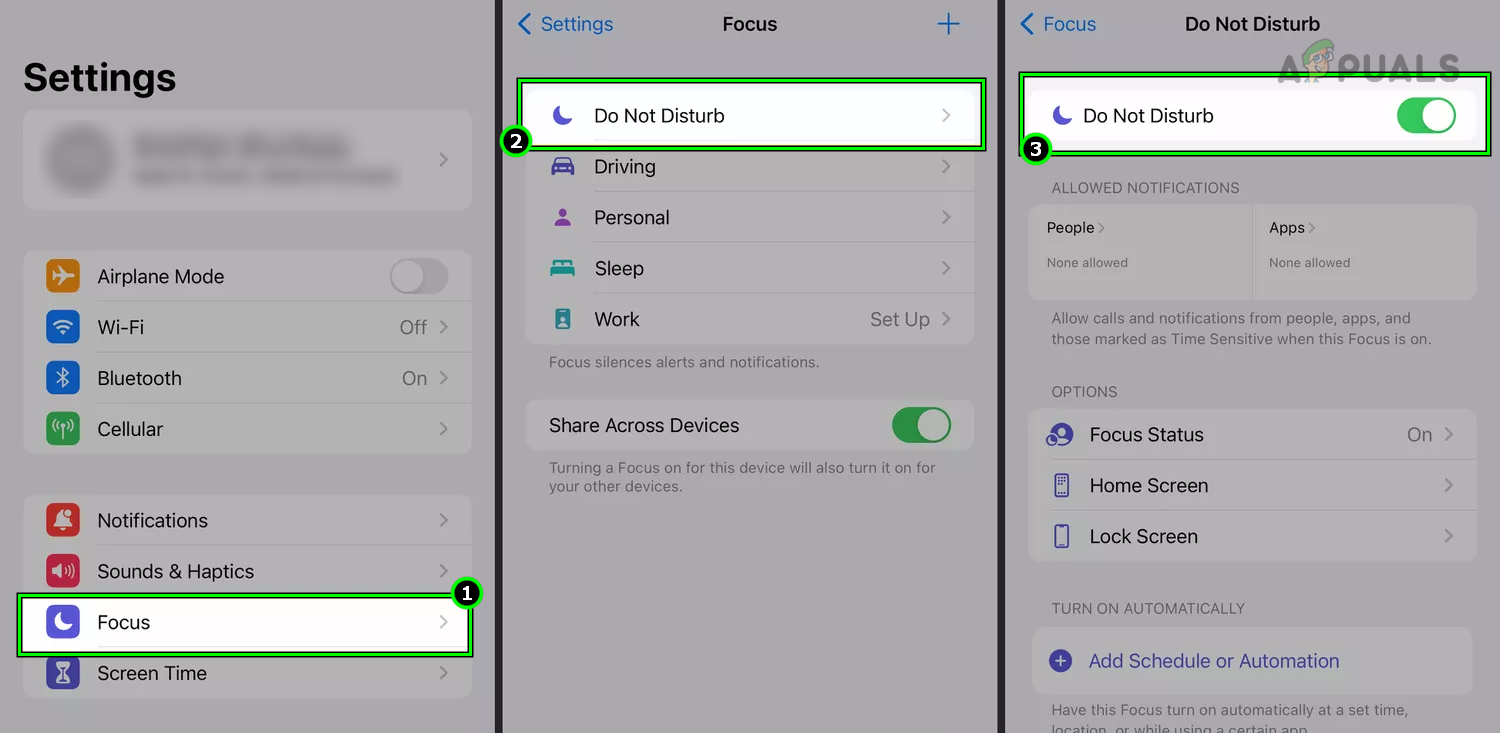
Disable Do Not Disturb Focus on the iPhone - Hit the back button and disable each Focus mode (along with scheduled or automatic enabling) one by one.
- Once done, restart the iPhone and determine if calls are being accepted on the iPhone properly.
- If so but you want to use the Focus mode, steer to Settings > Focus > Focus mode > Allow Calls from.
- Set the option to Everyone and restart the iPhone. See if that solves the problem.
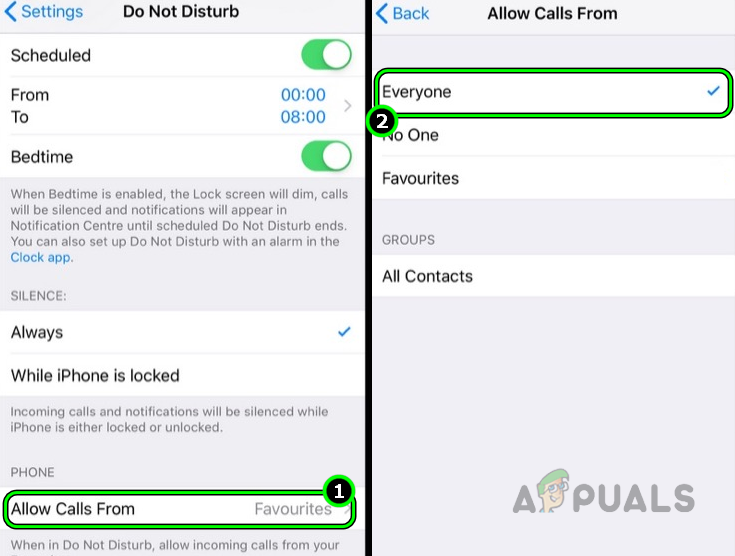
Set Allow Calls from to Everyone in the iPhone’s Do Not Disturb
17. Disable Wi-Fi or Wi-Fi Calling on the iPhone
Sometimes, the inability to receive calls on your iPhone could be due to interference from Wi-Fi signals. Also, if Wi-Fi calling is activated on your phone, it may cause your calls to be routed through the Wi-Fi network instead of your regular cellular network, leading to missed calls.
In such a scenario, the easiest way to solve this problem would be to switch off the Wi-Fi on your phone temporarily or to disable the Wi-Fi Calling feature on your iPhone.
- Navigate to Settings > Phone Wi-Fi Calling.
- Disable Wi-Fi Calling and see if the phone is receiving calls.
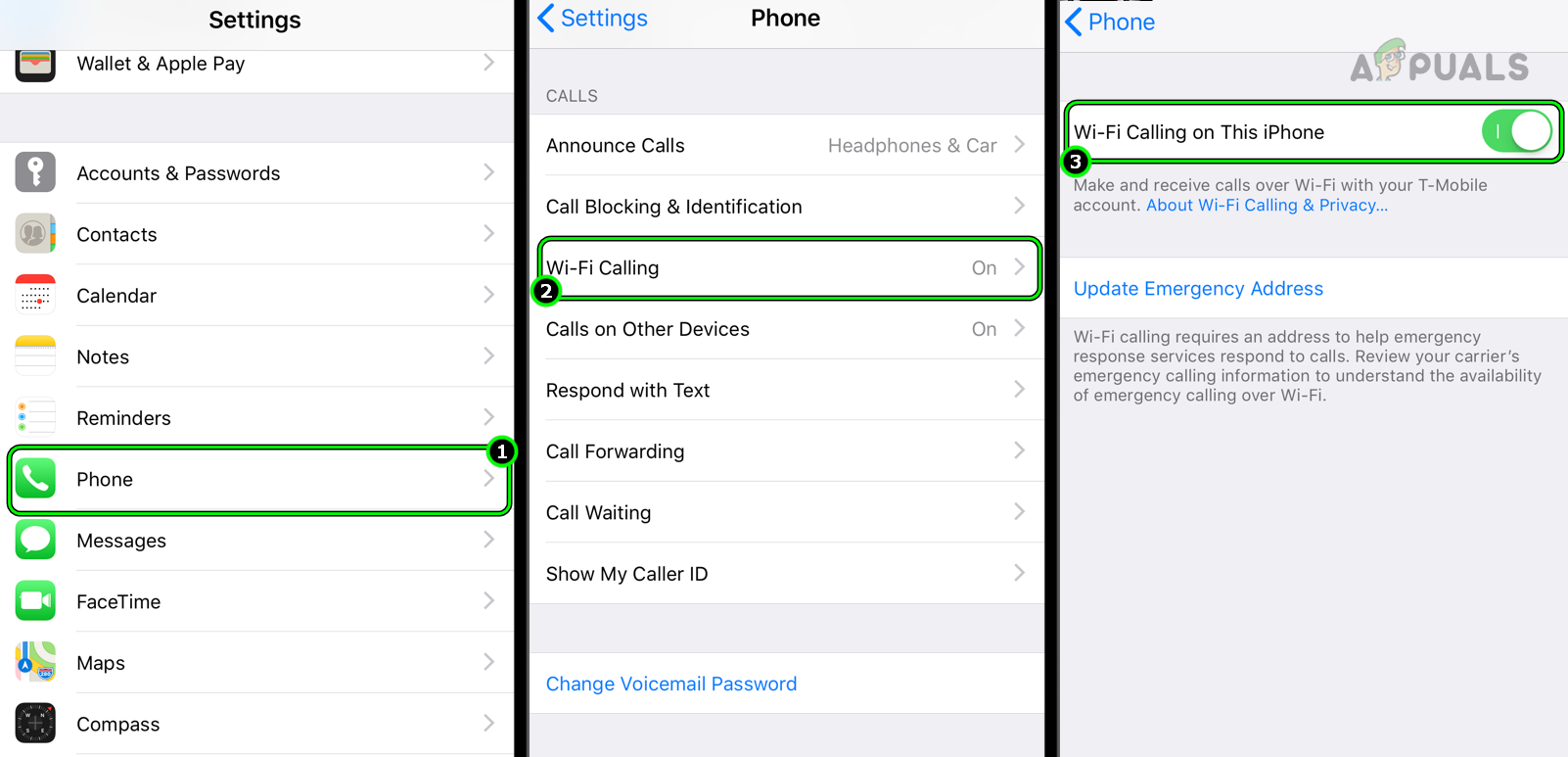
Disable Wi-Fi Calling on the iPhone - If that fails to work or Wi-Fi calling was already disabled, check if enabling the Wi-Fi Calling solves the problem.
- If the issue persists, navigate to Settings > Wi-Fi.
- Disable Wi-Fi and restart the iPhone.
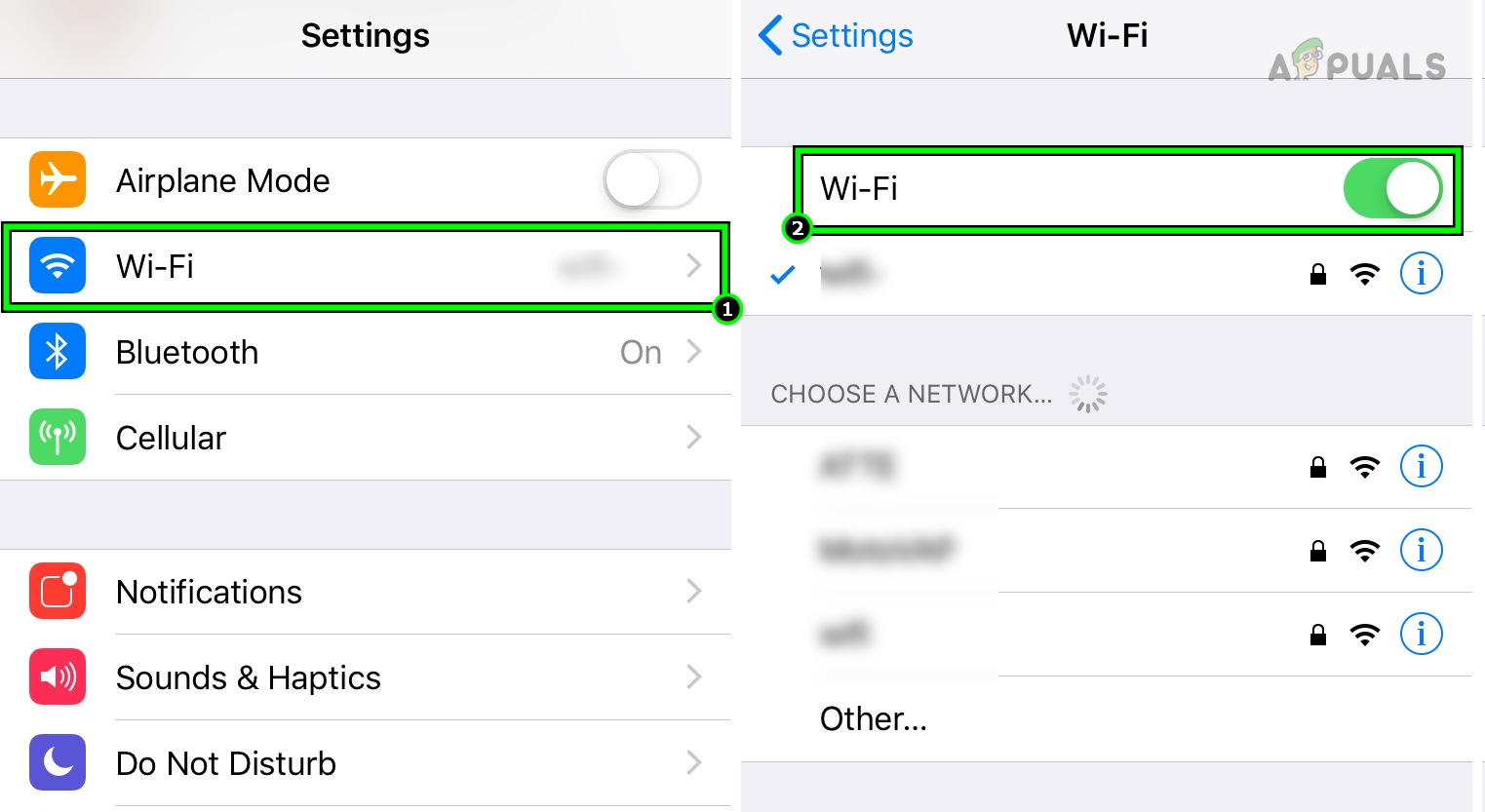
Disable Wi-Fi on the iPhone - Upon restart, check if the iPhone receives incoming calls (without enabling Wi-Fi). If so, then you may need to keep the Wi-Fi disabled or use another channel on the Wi-Fi.
18. Disconnect the Watch from the iPhone
If you’ve added an Apple Watch to your carrier account, it could potentially disrupt the call reception on your iPhone. This happens because the carrier might have difficulty routing calls to two devices that have the same caller ID.
To fix this, you can disconnect the Apple Watch from your iPhone. If your Apple Watch has cellular capabilities, you might need to go a step further and remove the watch from your cellular plan. This should help your iPhone start receiving calls again as expected.
- On your Apple Watch, navigate to Settings > Bluetooth. Disable it.
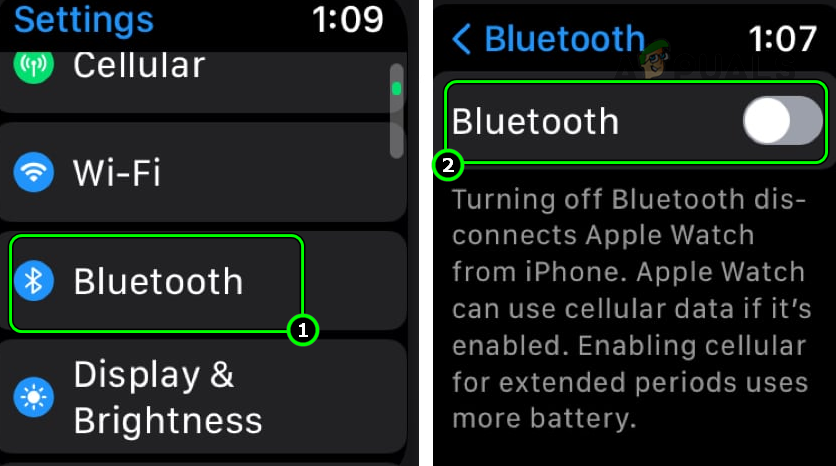
Disable Bluetooth on the Apple Watch - On your iPhone, navigate to Settings > Bluetooth. Disable it and restart the phone. Check if the phone has started to receive calls.
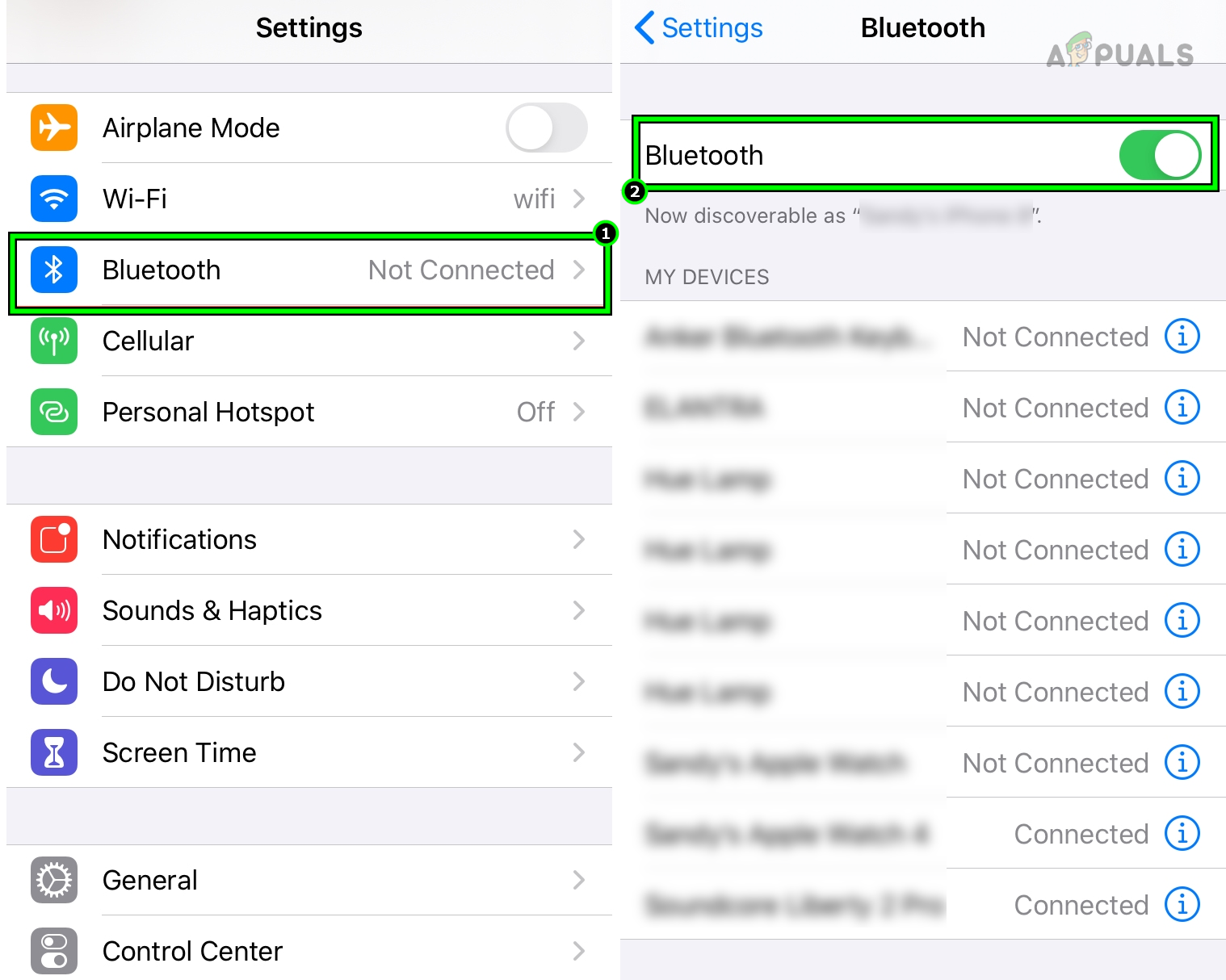
Disable Bluetooth in the iPhone Settings - If not, contact your carrier and ask them to remove the Apple Watch from your plan. If your carrier has an account management app, you may use that app to remove the Apple Watch from the account.
- Once removed, restart the iPhone and determine if calls are being received on the iPhone.
19. Edit the Cellular or Mobile Data Options of the iPhone
If the iPhone is set to a carrier network type (like 5G) that’s not compatible with your device, it could interfere with receiving calls. Essentially, your carrier might struggle to route calls to your phone if it’s configured to use a network type that doesn’t mesh well with your phone.
A good way around this is by adjusting your iPhone’s cellular or mobile data settings to use a different network type. For instance, you could switch from 5G to 4G.
- Navigate to Settings > Cellular or Mobile Data.
- Disable Mobile Data and restart the phone. Check if the phone is receiving calls properly.
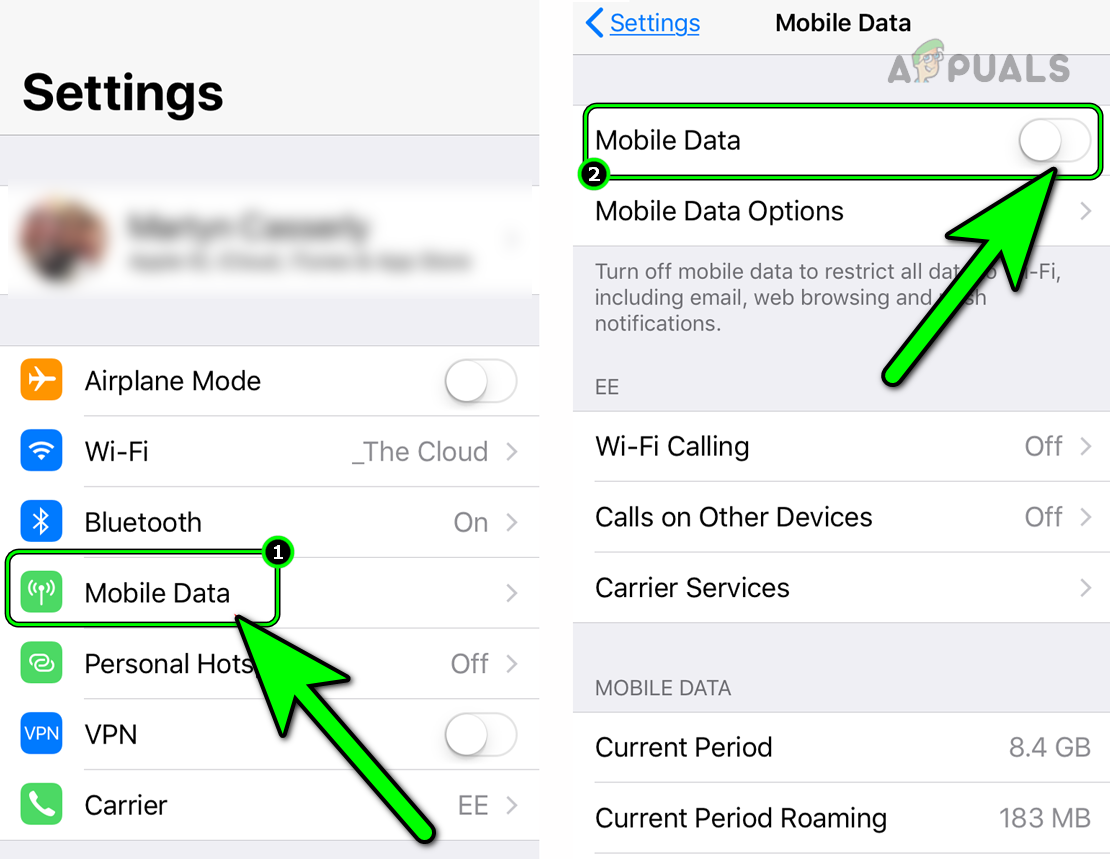
Disable Mobile Data on the iPhone - If the issue persists or you want to keep the mobile data enabled, navigate to Settings > Mobile Data > Mobile Data Options > Voice & Data.
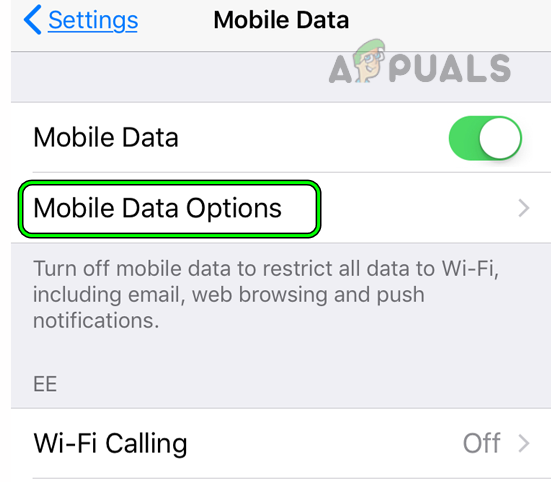
Open Mobile Data Options on the iPhone - Select LTE (not 5G or 5GE) and restart the iPhone. Check if the phone is receiving calls.

Open Voice & Data in the iPhone’s Mobile Data Options - If not, go to Voice & Data and select 3G.

Select LTE in the iPhone’s Voice & Data Options - Restart the iPhone and check if the iPhone is able to receive calls normally.
20. Remove and Re-add the ESIM to the iPhone
If you’re using an eSIM on your iPhone and it’s not functioning correctly due to an invalid profile, it can prevent you from receiving calls. A practical solution to this problem is to remove and then re-add the eSIM to your iPhone.
By doing this, you essentially reset the eSIM profile, which can often clear up any issues and restore your ability to receive calls.
- If you have a carrier app that is used to manage the carrier account or E-SIM (like the Visible app), uninstall the carrier app.
- Navigate to Settings > Mobile Data.
- Remove all the data plans from your iPhone.
- In the SIMs section, select the required E-SIM plan and then tap on Delete E-SIM.

Delete eSIM on the iPhone - Confirm to delete the E-SIM from your iPhone and power off the iPhone.
- Wait for 5 minutes and power on the iPhone.
- Reinstall the carrier app (like the Visible app) and log in.
- Add back the E-SIM to your iPhone and switch off the iPhone.
- Wait for 30 seconds and power on the iPhone. Confirm if the iPhone is receiving calls.
21. Reset the Network Settings of the iPhone
If the iPhone’s network modules are not functioning properly and are failing to comply with the cell tower, it will result in the iPhone issue at hand. Additionally, an excess of cell tower data in the iPhone’s network memory can bog down the network settings, particularly if you have recently switched carriers or ported your number.
To resolve this, reset the network settings on the iPhone. It is important to note that resetting the network settings will erase all network-related information such as Wi-Fi credentials, so make sure to back up or note down any essential information.
- Navigate to Settings > General > Reset.
- Tap on Reset Network Settings of the phone and once done, restart the phone. Verify if the iPhone is receiving calls

Reset the Network Settings of the iPhone - If not, put the iPhone in Airplane Mode and repeat the above steps to reset the iPhone’s network settings.
- Restart the iPhone and disable the Airplane Mode. See if the issue is resolved.
- If not, disable Wi-Fi and navigate to Settings > Cellular > Cellular Plan > Voice & Data.
- Make sure 5G is selected (if the network supports 5G) and again reset the network settings of the iPhone. Check if calls are being received on the iPhone.
22. Reset All the iPhone’s Settings to the Defaults
Sometimes, an operating system update on your iPhone might disrupt some settings related to communication. This can interfere with your ability to receive calls.
If you suspect this might be the case, a simple solution is to reset your phone’s settings back to their default state. This can resolve any conflicts or inconsistencies that were introduced during the update, and it should help to restore your ability to receive calls as expected.
- Navigate to Settings > General > Reset.
- Reset all the iPhone settings and if asked to, enter the phone’s passcode.

Reset All Settings on the iPhone - Restart the iPhone and check if it is receiving calls without any issues.
23. Reset the iPhone to the Factory Defaults
An operating system update on your iPhone might unintentionally mess up some crucial operating system modules, particularly those associated with network functionality. If this happens, it can lead to issues, including the inability to receive calls.
One way to tackle this is by resetting your iPhone to its original factory settings. This can help clear any system hiccups and should ideally get your phone back to functioning as it should.
- Navigate to Settings > General > Reset.
- Tap on Erase All Content and Settings and if required, type your iPhone password.

Erase All Content and Settings on the iPhone to Reset it to the Factory Defaults - Confirm to reset your iPhone and wait till the process completes.
- Once done, set up the iPhone as a new device and hopefully, it will be receiving calls normally.





